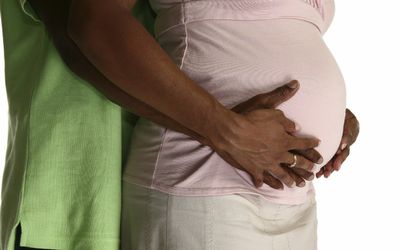FERTILITY medicine has come a long way since the birth in the UK of Louise Brown, the world’s first human "test-tube baby", conceived via in-vitro fertilisation (IVF) on July 25 1978.
In the intervening 35 years, about 5-million babies have been born through IVF worldwide, and fertility medicine is maturing. It has yet to reach adulthood, which is just as well.
Specialists say for a variety of reasons fertility problems are increasing in both men and women. Among these are that women are choosing to have babies later in life, and men are increasingly exposed to environmental toxins, such as phyto-oestrogens in meats from animals and birds fed hormones to force growth.
They need all the help they can get to have a baby.
Research is contributing to safer, more effective methods of IVF, the high-tech procedure in which eggs from the ovary are removed, fertilised with sperm in a laboratory, then returned to the womb.
Advances are also leading to more "world-first" infants.
Last month, the first baby was born in the UK using a pioneering method developed by specialists at Hammersmith Hospital and Imperial College London. The approach uses a natural hormone known as kisspeptin instead of a conventional fertility drug, to make the woman’s eggs mature during IVF treatment.
Kisspeptin may also avoid a rare but potentially fatal complication known as severe ovarian hyperstimulation syndrome, that can occur with conventional IVF, says Dr Waljit Dhillo, professor in endocrinology and metabolism and an endocrinologist at Imperial College London, who led the research.
IVF is known to be generally safe, but there are still risks with potent fertility drugs, and not just multiple births.
The current drug used in most IVF cycles (called hCG) works by "deliberately taking over the body’s natural processes, and overstimulating the ovary", Dr Dhillo says. It powerfully causes the eggs to mature, but can make the ovaries "go into overdrive" and cause overstimulation. Dr Dhillo’s team used kisspeptin in place of hCG, as this stimulates normal egg development in a "safer, more natural, gentler way".
Thus the researchers speculate the use of kisspeptin could abolish the risk of overstimulation altogether, but further studies are needed to prove this.
Dr Dhillo says results of his current study have been "very encouraging", despite only one birth so far. Kisspeptin caused the eggs to mature in 29 of the 30 women who participated in the study, Dr Dhillo says. Twenty-eight were able to use their eggs to begin IVF.
The next step will be to test kisspeptin in women most at risk of severe ovarian hyperstimulation syndrome, especially those with polycystic ovarian syndrome, a common cause of infertility, he says.
Kisspeptin takes its name in part from the American chocolate Hershey Kisses. It was discovered by scientists in 1996 working in a laboratory in Hershey, Pennsylvania, the headquarters of the chocolate company, and was initially investigated for anticancer properties.
In 2003, French and American research pointed to kisspeptin’s reproductive properties, after scientists showed that humans who do not have the receptors for kisspeptin do not go through puberty.
Dr Dhillo’s team assumed it would be safe, he says, because in a normal, healthy pregnancy, the placenta produces masses of kisspeptin, and the baby is "bathed in an amniotic fluid rich in kisspeptin for nine months".
If further studies show encouraging data, Dr Dhillo believes kisspeptin has potential to be used across all IVF treatments as a "more natural alternative" to stimulate egg production in infertile women.
Johannesburg gynaecologist Dr Merwyn Jacobson, who runs the Vitalab Fertility clinic, says because kisspeptin is an experimental preparation, it is unlikely to be commercially available for some time.
He adds that ovarian hyperstimulation syndrome is becoming far less common, especially in units more circumspect about how they perform ovarian stimulation for infertility.
A BBC news report quotes Prof Richard Fleming, of the British Fertility Society, saying that i f women were concerned, their doctor could explain the risks and merits of IVF and recommend the best treatment. He says there are patients who are "far better treated with conventional IVF".
The research was funded by the Medical Research Council UK and the National Institute for Health Research, and presented at the US Endocrine Society’s annual meeting recently.
Dr Goolam Mohamed, a Johannesburg-based gynaecologist with a subspecialty in reproductive medicine, and director of the Sandton Fertility Clinic, says among advances that have already significantly reduc-ed the risk of severe ovarian hyperstimulation is the use of agonist and antagonist fertility drugs to induce a natural cycle.
The combination can effectively "reduce the risk of hyperstimulation to almost zero", he says. The drugs are hormones that "cut off the brain", Dr Mohamed says, and prevent the pituitary from producing endo-genous hormones. Introducing hormones from outside the body puts "the doctor’s brain in charge of the conception process", and makes the process more manageable and controlled.
In another world first, a baby was born in the US last month after the analysis of embryos to avoid the risk of birth defects, using a new genome sequencing technique known as "next generation sequencing", developed by scientists at the University of Oxford in the UK.
Researchers believe the technique will "revolutionise embryo selection for IVF". Their study was reported at the annual meeting of the European Society of Human Reproduction and Embryology in London earlier this month, by Dr Dagan Wells of the University of Oxford’s NIHR Biomedical Research Centre.
In a press release, Dr Wells says next-generation sequencing provides "an unprecedented insight into the biology of embryos", and is already revolutionising genetic research and diagnostics. When applied to embryo assessment, it will allow "the concurrent analysis of serious inherited disorders and lethal chromosome abnormalities".
Current research has suggested evidence of a higher incidence of birth defects in babies born through IVF, but the scientific jury is still out, Dr Mohamed says.
Pre-implantation genetic diagnosis is a "massive advance", he says. Ten years ago, doctors could only rule out a few diseases. Today, they can test for just about any genetic, inheritable condition.
Most fertility clinics in SA offer pre-implantation genetic diagnosis, but it is expensive, Dr Mohamed says.
IVF is expensive overall — it costs between R45,000 and R50,000 per cycle — and is mostly not covered by medical schemes, as infertility is not considered an illness. Some closed funds, such as the Chartered Accountants Medical Aid Fund will cover one IVF cycle a year depending on plan type.
IVF is free in some countries, including the Scandinavian countries, Belgium, Holland and Israel, where governments will sponsor three or more cycles, and to some extent in the UK.
Belgian doctors claim to have developed a low-cost method that will be 10%-15% of current costs in western-style IVF programmes. Lead investigator Dr Elke Klerkx, of the Genk Institute for Fertility Technology, presented the study at the European Society of Human Reproduction and Embryology.
In a society press release, she says "infertility care is probably the most neglected healthcare problem of developing countries, affecting more than 2-million couples, according to the World Health Organisation".
Dr Mohamed says the basic protocol behind IVF is standard in all clinics in this country. It is a form of assisted reproductive technique or technology (ART), that includes procedures related to IVF.
Assisted reproductive techniques are used when other treatments, such as surgery and drugs have failed. However, they are "not a panacea for all infertile ills, and there will always be couples who do not succeed", he says.
All clinics across South Africa achieve similar IVF pregnancy rates, Dr Mohamed says. These used to be "dismal", but now hover between 30%-40% for a first IVF attempt, depending on a number of factors. That percentage is not as bad as it sounds. Dr Mohamed says natural fecundity — conceiving the "normal" way — is only 25% per month.





















Change: -1.39%
Change: -1.63%
Change: -1.60%
Change: -1.60%
Change: -1.31%
Data supplied by Profile Data
Change: -0.39%
Change: -0.40%
Change: -1.39%
Change: 0.00%
Change: -0.40%
Data supplied by Profile Data
Change: 0.77%
Change: -0.33%
Change: 0.62%
Change: 0.96%
Change: 1.28%
Data supplied by Profile Data
Change: 0.76%
Change: 1.02%
Change: 0.13%
Change: 0.50%
Change: -0.68%
Data supplied by Profile Data